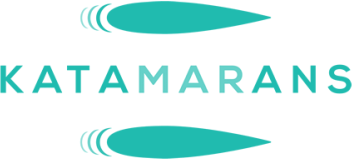Excess Sensations or Excess Cruising?
Excess Catamarans have worked hard to develop cruising yachts that are fun to sail and comfortable to live aboard.
The Excess 12 and 15 were launched in 2019.
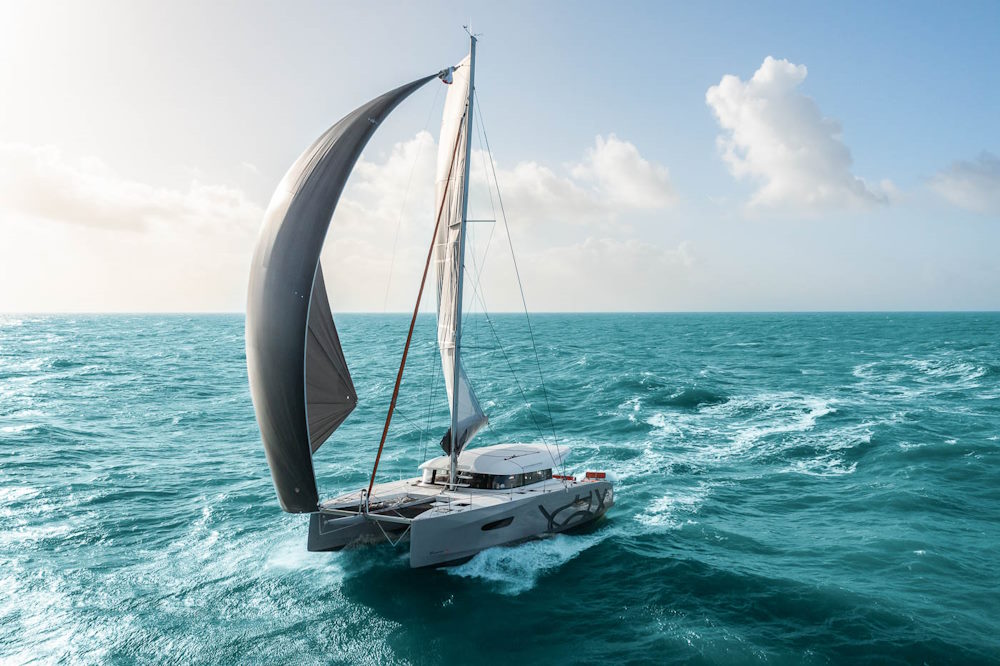
Then, in 2020 the French manufacturer launched the Excess 11 and the first Excess 14 splashed in 2022.
This 46 footer was designed by VPLP with feedback from customers and Excess owners via the Excess Lab, a forum to gather feedback and design ideas.
The Excess 14 strikes a good balance between performance and comfort in a cruising package. It’s a catamaran that has carved out its own space in the cruising market.
Let’s take a look at some of the features that they have developed.
Excess Sensations
One thing I have noticed about this catamaran manufacturer is that the team, led by Thibaut de Montvalon, is very focused on what they want to be and how they want to get there.
Having a clear vision and communicating it well is half the battle for organisations, and you’ll hear Excess often talk about “Sensations” – it’s a key driver for them. They want their owners, dealers and employees to enjoy sailing Excess yachts. It’s one of the reasons why this brand is attracting many monohull sailors.
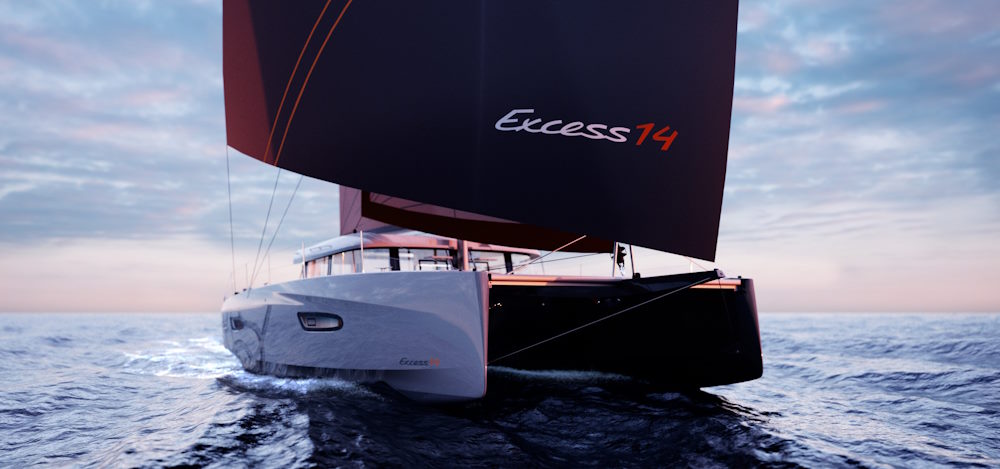
Sailing feel is a key design element in the 14. She has a sporty, low slung boom, asymmetric hulls, refined keels and is built with lightweight materials.
If you opt for the Pulse Line package, you can boost the upwind sail area by 10% to 135 m² (1,453 sq.ft) from 123 m² (1,323 sq.ft).
Built to Sail
The low boom, lower freeboard with reduced windage and sleek lines gives the 14 distinctive look. She has aft-set coach-roof, a forward-stepped mast, a composite bowsprit as standard and inverted bows.
The fins have been optimised for beating to windward, and the rudder blades have been extended.
VPLP and Excess have designed the 14 with a forward-set rig, a square-top mainsail, and a large overlapping genoa as standard to optimize the sail area to displacement ratio.
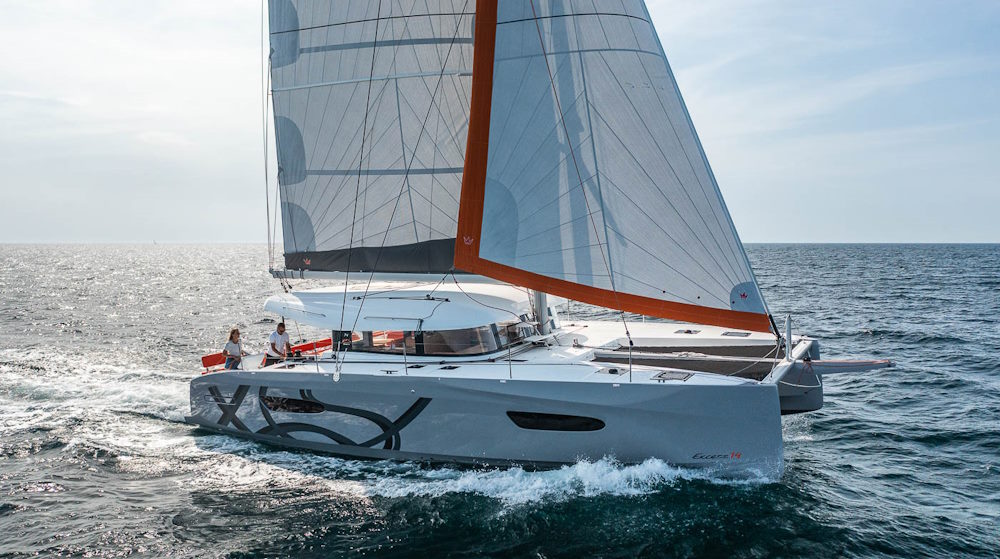
Bridgedeck clearance has been increased for better passage through the water, and the hulls designed asymmetrically to reduce drag. The low boom moves the centre of effort of the mainsail down and she has been built with foam sandwich and carbon reinforcements.
With a full complement of lighter wind sails flying off the bowsprit, this is a catamaran that should keep the smile on your face when the wind is blowing.
Sail Close to the Water
The helm stations are set aft with optional biminis, so you have a direct connection with the rudders and a good view of the sails.
Visibility has been optimised though untinted saloon windows.
The direct steering system uses textile lines, for a better helm feel.
The aft helms have an important safety aspect as well – all of the crew are forward of the skipper in his or her line of sight.
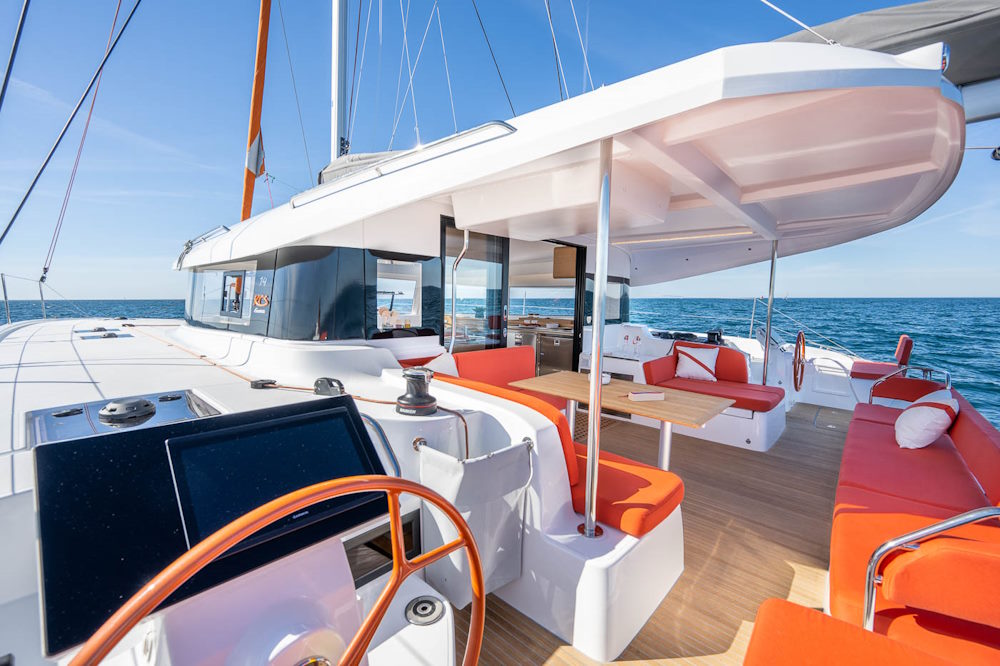
Performance Summary
VPLP, Excess and their customers have worked hard here to develop a good balance of performance and comfort with:
- A low boom and low centre of effort from the wind.
- A sporty sail area to displacement ratio particularly on the Pulse Line (26.5) which approaches some performance cat ratios. The overlapping genoa and composite bowsprit all help.
- Asymmetric hulls and optimised keels and rudders for upwind performance.
- Aft helms mean you sail close to the water with full view of the sails connected directly to the rudders.
- Construction from foam sandwich with carbon reinforcements results in a stiff, strong boat.
Excess Cruising
This is only half the story though, as the Excess 14 has been designed to deliver a decent performance level without compromising on comfort.
Comfort and Flexibility
This cruising catamaran offers high levels of comfort and flexibility in its living spaces. Volume and good headroom are priorities in a warm and bright environment.

Down below, in the hulls, you’ll find wide, comfortable beds, and bathrooms with a separate shower. Large and subdivided storage spaces have been designed to store your gear efficiently, with some great touches like the retractable chart table.
Optimise your layout
Everyone’s needs are different of course, so they have designed this catamaran with plenty of layout options.
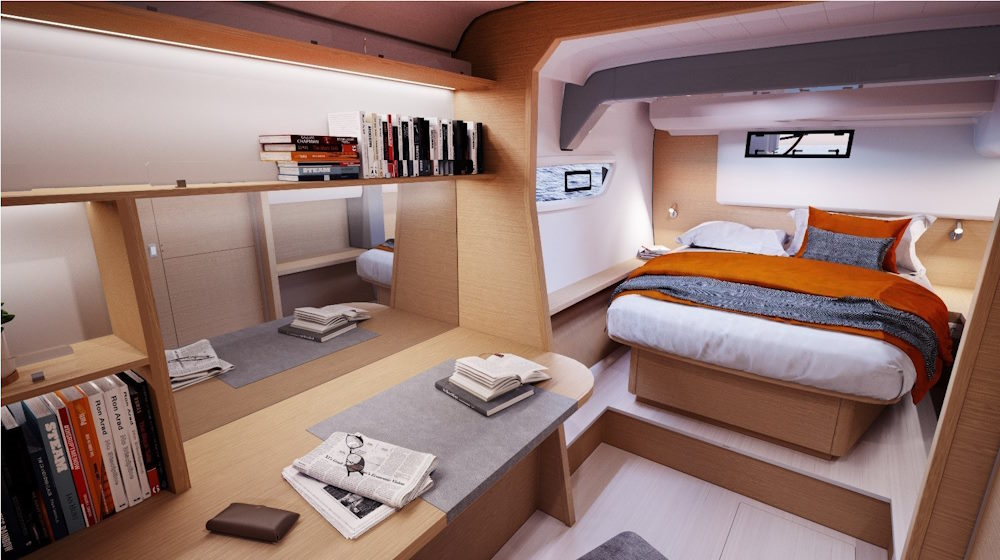
3 Cabins
In the 3-cabin version, the main features are :
-A central bathroom
-A large private dressing area
-Extra bunks as an option
4 Cabins
-Up to four cabins, four heads & four separate showers
– An optional skipper cabin in each hull
The Skylounge
An innovative solution on the coachroof – a spot for sundowners at anchor that does not compromise the low boom height.
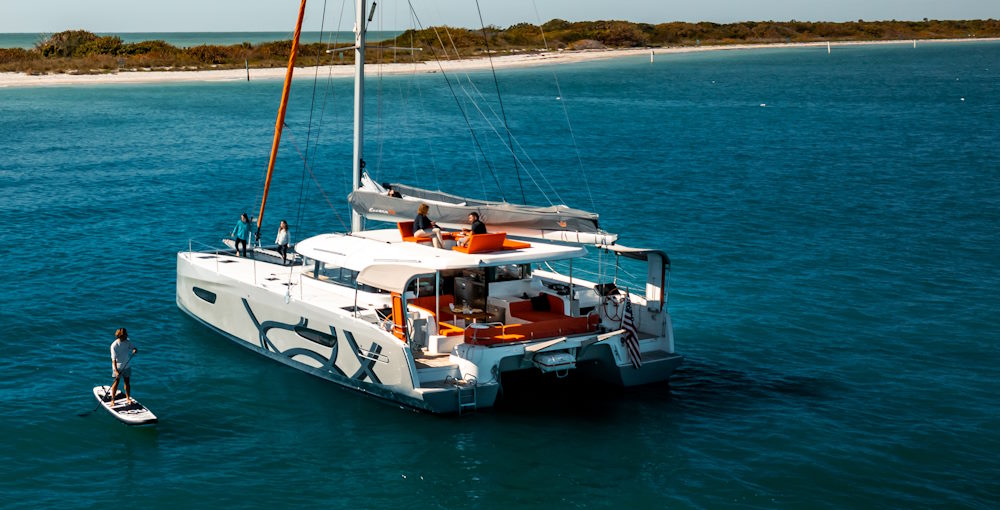
Dressing Room
An option for a walk-in dressing room allows you to store both sailing gear and clothes.
You can configure this with additional twin berths, for a family configuration.
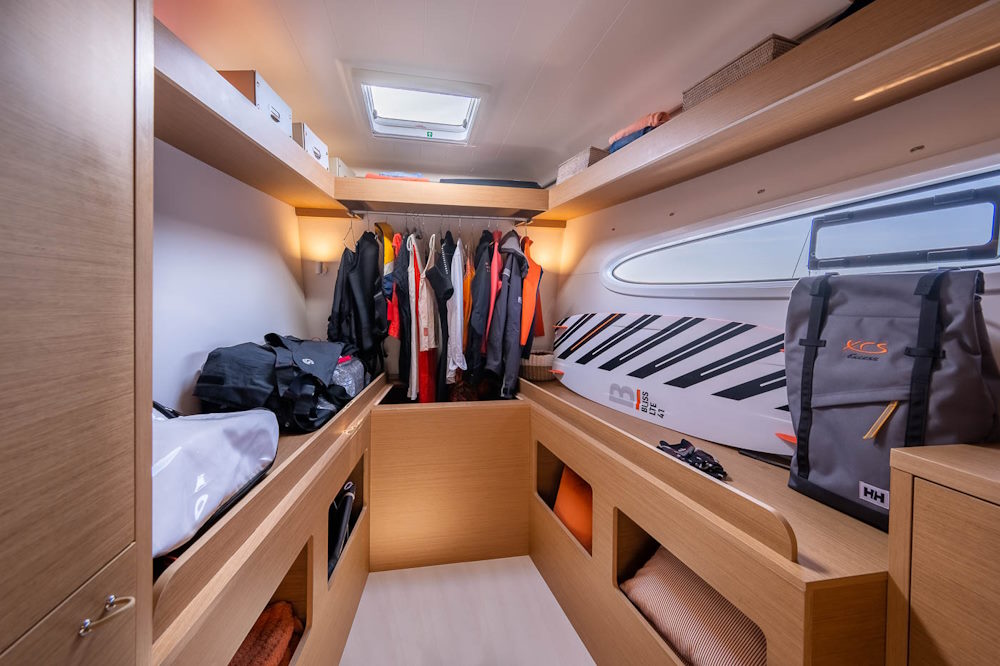
Comfort Summary
There is no denying that this a a very comfortable boat, particularly if you opt for the owner’s configuration (3 cabin). The aft helms allow for a large, connected living space up top, and down below the cabins and bathrooms are roomy and there is plenty of storage.
With the flexibility offered with the dressing room and the sky lounge on the coach-roof, it’s an appealing package.
Specifications
Sails
Square top mainsail
83 m² | 893 sq ft
Overlapping genoa
40 m² | 430 sq ft
Code 0 (option)
72 m² | 775 sq ft
Upwind sail area
123 m² | 1323 sq ft
PULSE LINE
Upwind sail area
135 m² | 1453 sq ft
Code 0 [option]
86 m² | 926 sq ft
Dimensions
Length overall (depends on options)
13.97 to 15.99 m | 45’9’’ to 52’5’’
Hull length
13.34 m | 43’9’’
Light displacement [EC]
12,8 T | 28219 lbs
Beam
7.87 m | 25’9’’
Mast clearance (std/pulse)
19.78 m | 64’11’’ / 21.54 m | 70’8’’
Draft
1.48 m | 4’10’’
CE certification
A : 10 – B : 12 – C : 16 – D : 20
Other
Fuel capacity
2 x 200 L
2 x 53 US gal
Engines
2 x 45 HP
2 x 57 HP (option)
Fresh water capacity
300 L (standard) + 300 L (option)
79 + 79 US gal (option)
Holding tank capacity
2 x 80 L
2 x 21 US gal
Berths
6 to 12
